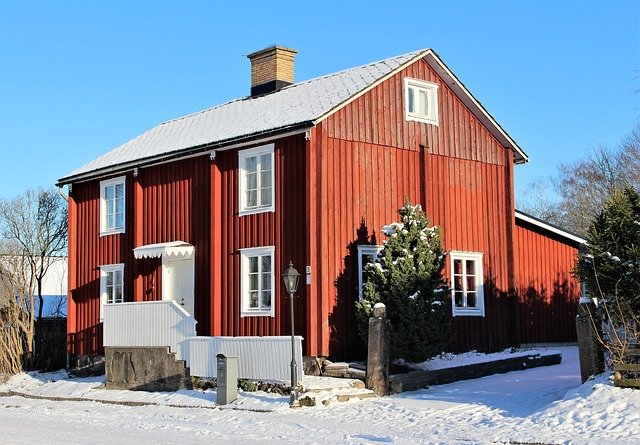 An ideal day for roofing would be warm temperatures, with no chance of rain or wind. Unfortunately, perfect days and clear skies aren’t the norm every day of the year in the Niagara Region! This is especially true during winter months, which brings even more challenges like freezing temperatures and snow. Roofers must find solutions to continue their job even with problematic weather conditions. WINTER ROOFING CHALLENGES The best temperature range for roof installations is between 70 and 80 degrees Fahrenheit (21-27 degrees Celsius), but when is it too cold to roof? It really is too cold when temperatures drop below 40° F (4° C). Many roofing products have adhesive properties that require the sun’s heat for activation. You may risk a faulty roof install if you do not pay attention to the temperature outside. SNOW AND ICE Slick surfaces are a safety hazard for workers. Ice can be difficult to see, and injuries like a slip and fall can happen if extra safety precautions aren’t taken. Snow also makes it difficult to see other dangers like a sky light or damaged areas on the roof. The extra weight of snow on a roof may also make it more susceptible to collapses. This type of damage may not always be obvious on the surface. QUALITY OF INSTALL AND MATERIALS When roofing in cold weather, you run the risk of materials becoming brittle and breaking. This may mean that your roof install may not be up to standard and will fail sooner than it should. SHINGLES Cracked and broken shingles often lead to water damage, one of the more serious problems with roofs. When working below 21 degrees Celcius, the adhesive may not reach the ideal elasticity and may not create a perfect seal. Temperatures warmer than 26 degrees Celcius can be problematic in the other direction. Asphalt shingles can become overly pliable and are susceptible to damage during installation. Contractors are more likely to overdrive nails, and foot traffic can erode the protective granular layer quite easily in extremely warm temperatures. While the installation of shingles in winter is possible with the right prep work and materials, it requires a little more attention. If winter installation is unavoidable, most asphalt shingle manufacturers require a specialized adhesive manually applied to each shingle for temperatures below 40° F (4° Celsius). If shingles are applied below 40° without the specialized adhesive, you risk a voided warranty. EPDM EPDM (rubber) membrane roofing materials are even more temperature sensitive than asphalt (composition) shingles. EPDM is joined together using an extensive amount of adhesive. It requires high temperatures to be pliable enough to install and cure. EPDM adhesive is very thick and hard to work with even at high temperatures. Manufacturers recommend the temperature be above 45° F (7° Celsius) for installation. This recommended temperature is not very practical unless a warm storage area is available to keep the adhesive warm until the moment it is used. TIPS FOR ROOFING IN COLD WEATHER While it might require a few extra steps, roofing in the winter can be done safely. The quality of the install can be just as good as in warm weather with the right preparation and contractors. Using the right tools and safety equipment will make any job easier, but it’s even more important in winter conditions. If you need roof work done and aren't sure about things, my team and I at Class Eh! Roofing in Niagara-on-the-Lake would be more than happy to come out and take a look for a free inspection. Please give us a call at 289-687-6924 or fill out the contact form here for a quick response:
3 Comments
|
AuthorWayne Jeffreys is a native of Niagara-On-The-Lake and owner of Niagara based roofing company Class Eh Roofing! Archives
January 2024
Categories |


 RSS Feed
RSS Feed